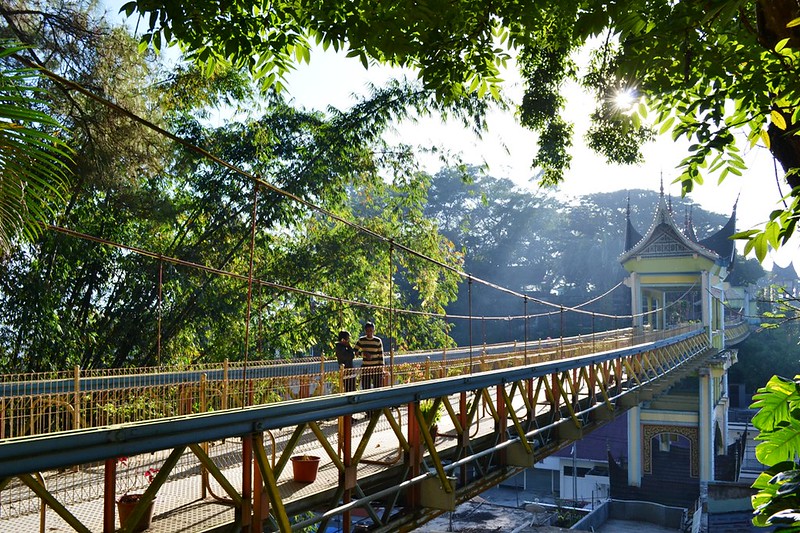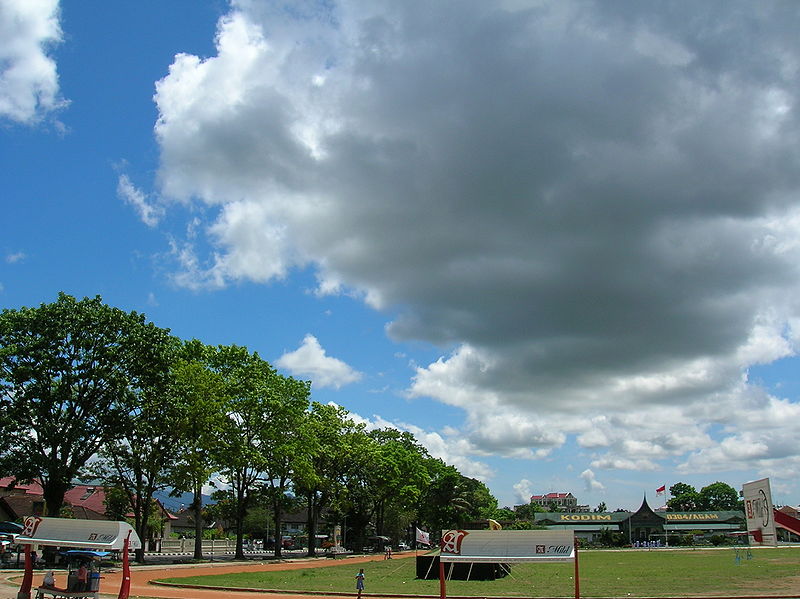Bukittinggi is a city that i love so much. Because I live, go to school and grow in this city.
So, This is Bukittinggi city :)

History
The city has its origins in five villages that served as the basis for a marketplace.

The city was known as Fort de Kock in colonial times in reference to the Dutch outpost established here in 1825 during the Padri War. The fort was founded by Captain Bauer at the top of Jirek hill and later named after the then Lieutenant Governor-General of theDutch East Indies, Hendrik Merkus de Kock. The first road connecting the region with the west coast was built between 1833 and 1841 via the Anai Gorge, easing troop movements, cutting the costs of transportation and providing an economic stimulus for the agricultural economy. In 1856 a teacher-training college (Kweekschool) was founded in the city, the first in Sumatra, as part of a policy to provide education opportunities to the indigenous population. A rail line connecting the city with Payakumbuh and Padang was constructed between 1891 and 1894.
During the Japanese occupation of Indonesia in World War II, the city was the headquarters for the Japanese 25th Army, the force that occupied Sumatra. The headquarters was moved to the city in April 1943 from Singapore and remained until the Japanese surrender in August 1945.
During the Indonesian National Revolution, the city was the headquarters for theEmergency Government of the Republic of Indonesia (PDRI) from December 19, 1948 to July 13, 1949. During the second 'Police Action' Dutch forces invaded and occupied the city on December 22, 1948, having earlier bombed it in preparation. The city was surrendered to Republican officials in December 1949 after the Dutch government recognized Indonesian sovereignty.
The city was officially renamed Bukittinggi in 1949, replacing its colonial name. From 1950 until 1957, Bukittinggi was the capital city of a province called Central Sumatra, which encompassed West Sumatra, Riau and Jambi. In February 1958, during a revolt in Sumatra against the Indonesian government, rebels proclaimed the Revolutionary Government of the Republic of Indonesia (PRRI) in Bukittinggi. The Indonesian government had recaptured the town by May the same year.
A group of Muslim men had planned to bomb a cafe in the city frequented by foreign tourists in October 2007, but the plot was aborted due to the risk of killing Muslim individuals in the vicinity. Since 2008 the city administration has banned Valentine's Day and New Year's celebrations as they consider them not in line with Minangkabau traditions or Islam that can lead to "immoral acts" such as young couples hugging and kissing.
Administration
Bukittinggi is divided in three subdistricts (kecamatan), which are further divided into five villages (nagari) and 24 kelurahan. The subdistricts are Guguk Panjang, Mandiangin Koto Selayan, and Aur Birugo Tigo Baleh.
Transportation
Bukittinggi is connected to Padang by road; a dysfunctional railway line also exists. For inner-city transport, Bukittinggi employs a public transportation system known as Mersi (Merapi Singgalang) and IKABE that connect locations within the city. The city preserves the traditional horse-cart widely known in the area as Bendi, although the use is limited and more popular with tourists, both domestic and foreign.
It is a city popular with tourists due to the climate and central location. Attractions within the city include:
- Ngarai Sianok (Sianok Canyon)
- Lobang Jepang (Japanese Caves) — a network of underground bunkers and tunnels built by the Japanese during World War II
- Jam Gadang — a large clock tower built by the Dutch in 1926.
- Pasar Atas and Pasar Bawah are traditional markets downtown.
- Taman Bundo Kanduang park. The park includes a replica Rumah Gadang (literally: big house) with the distinctive Minangkabau roof architecture) used as a museum of Minangkabau culture and a zoo. The Dutch hilltop outpost Fort de Kock is connected to the zoo by the Limpapeh Bridge pedestrian overpass.
- Museum Rumah Kelahiran Bung Hatta (Museum of Bung Hatta Birthplace), the house where Indonesian founding father Mohammad Hattawas born, now a museum.
Notable nearby destinations include Lake Maninjau
and the Harau Valley.
Here are some photos of Bukittinggi City
 | ||
Jam Gadang and Bendi
|
 |
| Sianok Canyon |
 |
| Jembatan Limpapeh |

Lap Kantin

Rumah Gadang
 |
| Bukittinggi :) |











0 komentar:
Posting Komentar